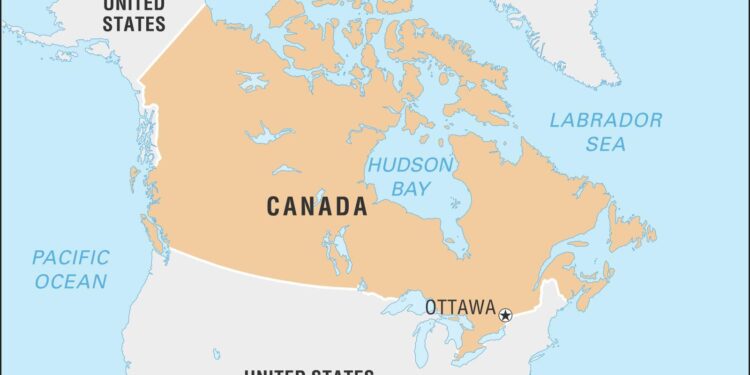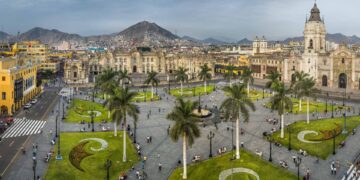Canada Issues New Travel Alert for Peru Amid Rising Safety Concerns for Tourists in Lima and Callao
In a significant move, the Canadian government has issued an updated travel advisory for Peru, urging citizens to exercise caution amid escalating safety risks in popular tourist destinations such as Lima and Callao. This alert comes on the heels of increased incidents affecting travelers, prompting officials to expand warnings to include border regions, where the potential for crime and civil unrest has heightened. As travelers weigh their options for exploring Peru’s rich cultural heritage and breathtaking landscapes, the Canadian travel advisory serves as a crucial reminder of the evolving safety landscape in this South American nation. As concerns mount, both tourists and travel agencies are reassessing their plans, raising questions about the impact of these advisories on the tourism industry and the experiences of those seeking to visit Peru in the near future.
Canada Raises Travel Advisory for Peru Noting Safety Concerns in Lima and Callao
The Canadian government has officially heightened its travel advisory for Peru, particularly focusing on the metropolitan areas of Lima and Callao. In light of increasing safety concerns, tourists are urged to exercise greater caution while navigating these regions. Authorities have reported a rise in crime, including petty theft, robberies, and assaults, particularly in busy tourist spots and public transport. Travelers are advised to stay vigilant, avoid showcasing valuable items, and take extra precautions during nighttime outings.
Furthermore, the advisory extends to border zones, where security risks complicate the safety landscape. Key points of concern include:
- Heightened criminal activity, especially in districts known for nightlife.
- Increased police presence and checkpoints in regions bordering other countries.
- Potential for civil unrest or protests affecting transportation and access.
In response to these issues, the government recommends that all travelers maintain a low profile, utilize reputable transportation options, and stay informed about local conditions. Engaging with reliable local resources can help mitigate risks and enhance the travel experience in this popular South American destination.
Increased Risks for Tourists Lead to Expanded Warnings in Peruvian Border Areas
The recent uptick in safety concerns in Peru has prompted Canadian authorities to issue a new travel alert, reflecting heightened risks for tourists in urban areas such as Lima and Callao. Travelers are particularly urged to exercise caution when venturing into border regions where crime rates have surged. Reports indicate that incidents involving petty theft, robbery, and more violent crimes have increased, making it essential for visitors to stay informed and vigilant during their trips. Key travel advisories now emphasize the need for awareness of surroundings, secure accommodations, and reliable transportation options to minimize risks.
Enhanced warnings extend beyond mere crime statistics as local authorities implement measures to improve security. Travelers are encouraged to adhere to the following guidelines to ensure their safety:
- Use registered taxis or ride-sharing services.
- Avoid displaying valuables in crowded areas.
- Stick to well-lit and populated routes at night.
- Stay informed about local news and updates on safety conditions.
Given these developments, tourists planning trips to Peru should remain aware of their surroundings and stay up-to-date with evolving travel advisories. Local officials continue to assess security measures, highlighting the need for both vigilance and proactive planning in order to enjoy a safe experience in a country rich in culture and beauty.
Guidance for Canadian Travelers: Enhancing Safety Measures Amidst Growing Threats
As travelers prepare for their journeys to Peru, particularly to its bustling cities of Lima and Callao, it is essential to remain vigilant amidst heightened safety concerns. Canadian authorities urge tourists to adopt proactive measures to ensure their well-being during their stay. Key recommendations include:
- Stay Informed: Regularly check local news and government advisories for updated information on safety and security conditions.
- Avoid High-Risk Areas: Exercise caution in neighborhoods known for higher crime rates, especially after dark.
- Secure Valuables: Keep personal belongings secure and avoid displaying expensive items that may attract unwanted attention.
- Travel in Groups: Whenever possible, explore popular areas with companions to enhance safety.
In addition to these personal precautions, travelers are encouraged to familiarize themselves with emergency contacts and local resources prior to their departure. Below is a summary of essential information that can assist in navigating one’s safety strategy while traveling in Peru:
| Emergency Services | Contact Numbers |
|---|---|
| Police | 105 |
| Ambulance | 106 |
| Fire Department | 117 |
| Tourist Assistance Hotlines | 0800-112-008 |
Employing these strategies and resources not only enhances the safety of Canadian travelers but also enriches their overall experience in Peru, allowing them to enjoy all that this vibrant nation has to offer with peace of mind.
In Conclusion
In conclusion, the Canadian government’s updated travel advisory underscores the evolving safety landscape for tourists in Peru, particularly in the urban centers of Lima and Callao, as well as border areas. As travelers continue to explore this vibrant country, awareness and caution are paramount, given the heightened risks. Tourists are encouraged to stay informed about local conditions, abide by safety recommendations, and prioritize their personal security during their journeys. With careful planning and vigilance, travelers can still experience the rich cultural tapestry that Peru offers while navigating the complexities of an increasingly cautious travel environment. As the situation develops, it will be essential for visitors and authorities alike to remain vigilant in ensuring that tourism in Peru can continue safely and responsibly.















